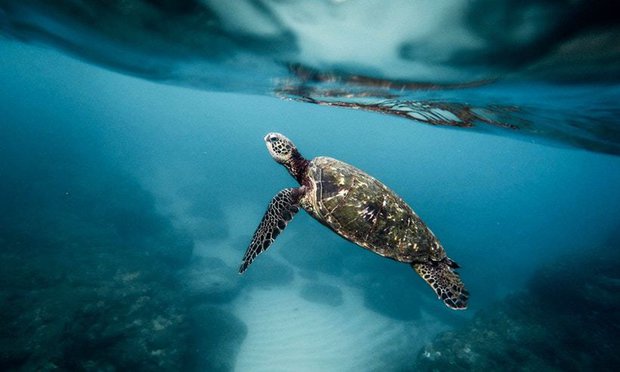The first episode of the much-anticipated Blue Planet II hit our screens last Sunday, and if you thought David Attenborough had exhausted the power to thrill us with the natural world, think again.
It’s been 16 years since the first series of Blue Planet and new technology has now given us the chance to delve deeper into the ocean than ever before. With stunning imagery from oceans all over the world, the program featured surfing dolphins in South Africa, sea dragons in the Great Barrier Reef and a relatable sea cucumber who never stops eating. In the waters off Japan, a male kobudai pursued a range of female mates, showboating his bulbous head. But within moments we’re shown the female fish turning the tables by amazingly changing sex and forcing the old male off his patch.
This week’s nightmarish creature from the deep, turned out to be a giant trevallie from the Indian Ocean. These large, gaping mouthed fish catch birds by leaping out of the water and swallowing them whole. The greatest tension filled moment of the episode came watching a young bird narrowly escape one of these monsters.
A more emotional encounter came later on where viewers were drawn to pity a mother polar bear starving with her cubs in the Antarctic while also praying that her walrus prey managed to escape. But this time there’s a third player in the chase. It’s us who have imbalanced the playing field, as climate change continues to melt the shrinking ice caps where the walrus’ take shelter from death. The Artic portion of the show highlighted the environmental damage humans have dealt the world in a way that the first series arguably neglected. With a gentle yet poignant touch, we are once again reminded of the importance of conserving the world’s oceans and the effect that we have already had on them.
Esther Marshall
Image: Entertainment ie

